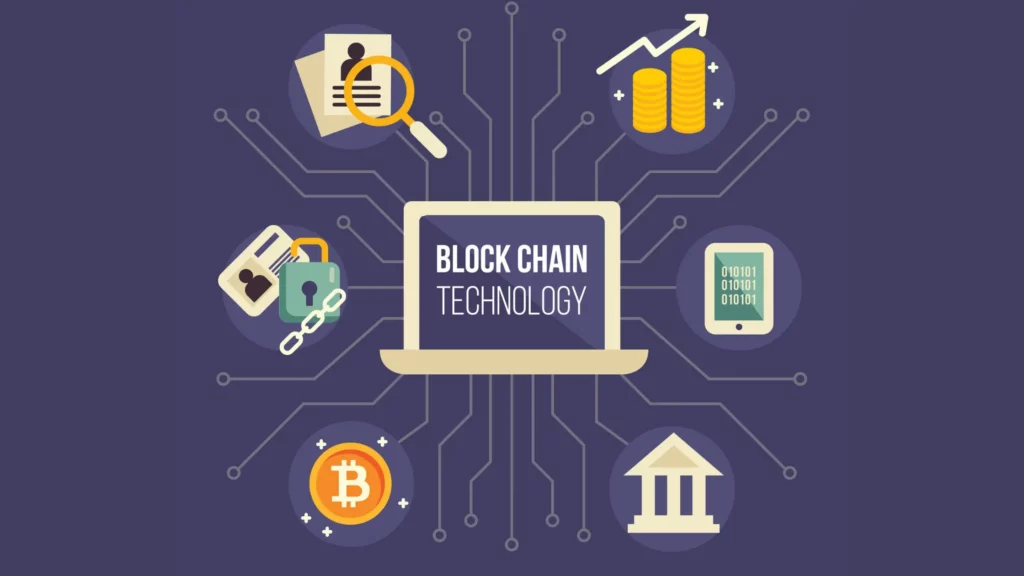Imagine a world where you can send money to a stranger overseas without banks, verify the authenticity of a diamond in seconds, or vote in elections from your phone—with zero risk of fraud. This isn’t science fiction; it’s the promise of blockchain technology.

In this guide, we’ll demystify blockchain for absolute beginners. By the end, you’ll understand:
- What blockchain actually is (no jargon!)
- How it differs from traditional databases
- Real-world applications beyond Bitcoin
- Why it’s considered “hack-proof”
Blockchain Explained in Plain English
Let’s start with a simple analogy.
Think of blockchain as a digital notebook shared across thousands of computers worldwide. Every time someone makes a transaction (e.g., “Alice sends Bob 5 PEPE coins”), it’s written as a new page (called a block) in this notebook. Once a page is filled, it’s stapled permanently to the previous pages (forming a chain).
Key Characteristics:
- Decentralized: No single entity controls the notebook. Copies exist on thousands of devices (nodes).
- Immutable: Pages can’t be erased or altered retroactively.
- Transparent: Anyone can audit the notebook’s history.
How Blockchain Works (Step-by-Step)
Let’s break down a blockchain transaction using a real example:

Step 1 – Initiation
You send 10 PEPE coins to a friend. This creates a transaction record with details:
- Sender: Your wallet address
- Receiver: Friend’s wallet address
- Amount: 10 PEPE
- Timestamp: 2:30 PM, Jan 1, 2024
Step 2 – Verification
The transaction is broadcast to the network. Nodes (special computers) check:
- Do you have enough PEPE?
- Is the transaction format valid?
Step 3 – Block Creation
Valid transactions are grouped into a block. For Bitcoin, a new block forms every 10 minutes.
Step 4 – Hashing & Chaining
Each block gets a unique digital fingerprint (hash). This hash includes:
- The current block’s data
- The previous block’s hash
This creates an unbreakable chain. Altering one block would require recalculating all subsequent hashes—a computational impossibility.
Step 5 – Consensus
Nodes use algorithms like Proof of Work (used by Bitcoin) or Proof of Stake (used by Ethereum) to agree on the ledger’s state.
Why Blockchain is Revolutionary
Traditional systems vs blockchain:
| Aspect | Banking System | Blockchain |
|---|---|---|
| Control | Centralized (banks/governments) | Decentralized (nodes) |
| Transaction Speed | 1-3 business days | 10 mins (Bitcoin) – 2 sec (Solana) |
| Fees | 10−50 international transfer | 0.01−5 (depending on network) |
| Transparency | Private ledgers | Publicly auditable |

Real-World Use Cases:
- Supply Chains: Walmart uses blockchain to track mango shipments from farm to store. Contamination sources can be traced in 2 seconds vs 7 days.
- Healthcare: Estonia stores patient records on blockchain. Doctors need patient consent to access data, reducing breaches.
- Voting: Sierra Leone tested blockchain voting in 2018, cutting tallying time from days to minutes.
Debunking Blockchain Myths
Myth 1: “Blockchain is only for cryptocurrencies.”
Reality: Crypto is just one application. Blockchain is used for contracts, IDs, and even royalty tracking in music.
Myth 2: “Blockchain is 100% anonymous.”
Reality: Most blockchains are pseudonymous. While wallet addresses don’t show names, sophisticated analysis can link them to real identities.
Myth 3: “It’s too late to adopt blockchain.”
Reality: Global blockchain spending is projected to hit $19 billion by 2024 (Statista). Early adopters like PEPE TAP are leading the charge.
Getting Hands-On with Blockchain
The best way to learn? Interact with blockchain yourself:
- Explore a Block Explorer: Visit Blockchain.com to view live Bitcoin transactions.
- Try a Testnet: Ethereum’s Rinkeby Testnet lets you send fake ETH to experiment.
- Play-to-Earn Games: PEPE TAP lets you earn real crypto while learning blockchain basics through gameplay
Blockchain isn’t just a tech buzzword—it’s a paradigm shift in how we handle trust and transactions. While challenges remain (scalability, regulation), its potential to disrupt industries from finance to healthcare is undeniable.
Next Up: The History of Blockchain: From Bitcoin to Global Adoption
Ready to experience blockchain? Play PEPE TAP and earn crypto while mastering your first transactions!”
